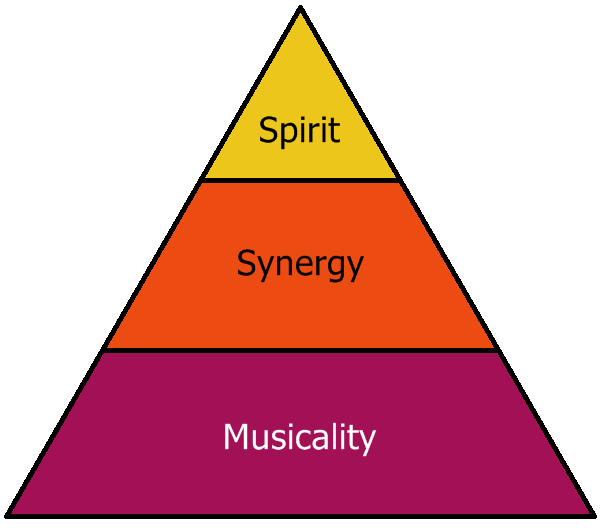At Fevah we're passionate about our dance community and we also enjoy how competitions support social dancing:
- Competition categories promote skills that make us better social dancers
- We compete to push ourselves and pursue self-development along with others to make us better social dancers
In 2019, Deb and I (Matt) danced in Australia, NZ, England, Wales and Bali with dancers from many countries and studios. We could dance with anyone from anywhere to any music. It made little difference:
- What foot our partner used
- What type of lead: body, arm or whether moving with or moving away from our partner
- Alignment of the dance, whether linear or circular (linear has been popular since 2010 with slower music appearing in playlists more frequently, circular works well with fast music)
What did make a difference was:
- Listening to the music
- Partnering skills
- Being fully present and committed
We have 3 groups of criteria that support the aims of social partner dancing: Musicality, Synergy and Spirit.

All dancers should show some of all of these elements. We have represented the three groups in a pyramid to suggest Musicality, including timing and interpretation, is an important base and must exist in some measure or the other tiers will topple.
Synergy includes partnership and technique, vital elements for two people creating a dance that is greater than what either of them could do on their own.
Spirit emphasises the attitude that the dancers bring and being fully present in the moment.
Criteria in Detail
Musicality
Musicality represents the dancing in "Social Partner Dancing", i.e. moving with music.
There are many definitions of musicality - we like the one below that we have adapted from
Musical U 🔗,
Musicality is a set of "inner skills" which let you freely and confidently express yourself to the music.
Musicality for our purposes can be broken down into a number of areas:
Timing
Timing is about how we match our movements to the music. Dancers are expected to demonstrate that they have an understanding of moving with the music rather than despite it.
At lower levels dancers are expected to be able to move to the beat of the music, at higher levels other rhythms may also be used to inspire variety in the speed of movements.
Musical Interpretation
Dancers can use many aspects of the music besides the beat such as: lyrics, melody, mood and genre to inspire their movements.
At higher levels dancers might also aim to reflect the phrasing in the music, and changes within the structure of the song such as verse, chorus and bridge.
Move Choice
At higher levels dancers should be able to select which moves in their repertoire are appropriate to dance to the music being played.
Synergy
Synergy represents the partnership in "Social Partner Dancing".
Synergy is where two (or more) individual dancers can work together in a partnership to create something that is greater than the sum of each dancer separately.
Judges will be taking into account the following:
Partnership
The aim is for a couple (or more) to dance with a common aim and be able to connect and communicate well with each other. Leaders should lead moves at a level appropriate for their follow and follows need to bear in mind the level of the leader when adding to the dance conversation.
Technique
Technique of the individuals, such as core control for posture and balance, contributes to the synergy possible for a partnership. This enables good lead and follow technique, controlled movements and accurate execution of moves.
Freestyle & Moves
At the lower levels judges want to see the partnership dancing basic Modern Jive moves well.
At higher levels judges want to see what the dancers can create together and we expect to see moves that are more complex requiring better balance, control and technique.
Dancing should be freestyle or 'off-the-cuff' where moves/movements are danced in any order and not in a choreographed sequence.
Spirit
Spirit aligns to the "Social" in "Social Partner Dancing".
Spirit is where it all started - when humans first started creating music and moving to it. Where people came together as a community and celebrated dancing for the sheer joy of it.
Show that you want to dance
Be yourself. You're the best person at being you, be true to yourself and your true spirit will shine forth.
Alternatively use the music to take on a different character or persona and express that with the same spirit you would express yourself.
Audience and Performance
Although you do not have to dance in a slot or in a particular orientation you need to be aware that the audience - including the judges - want to get the best view of what you can do so they can connect with you and live vicariously through your spirited performance!
We also expect dancers to exhibit positive social behaviours, such as inclusivity and consent.
Category specific criteria
Categories will have specific criteria that the judges will also be looking at, be sure to check each category that you enter.
For exmaple: Teams, Showcases and Prepared Freestyle will also be ranked according to Modern Jive content. Steals have a criteria concerning the number and fluidity of steals.
Not included in the criteria
Specific Footwork
With the number of dancers able to both lead and follow there is even less reason to demand a specific footwork for each role.
We welcome various patterns such as triple steps as such are not penalised by judges.

